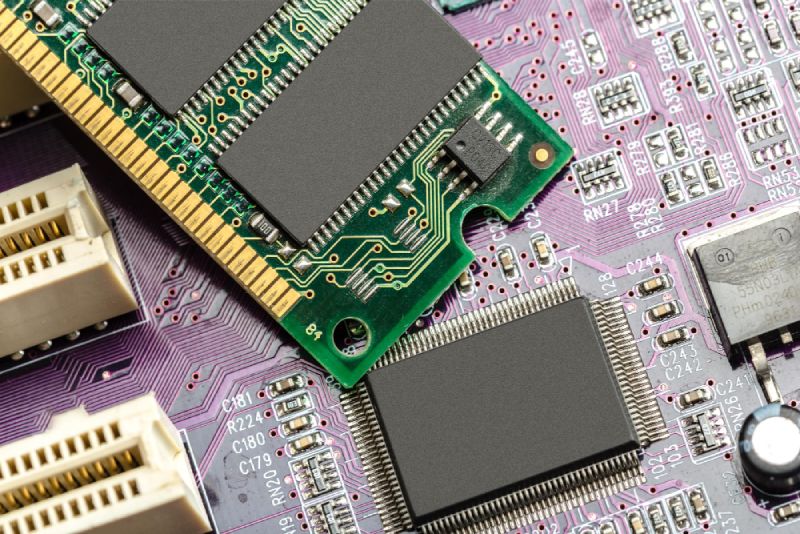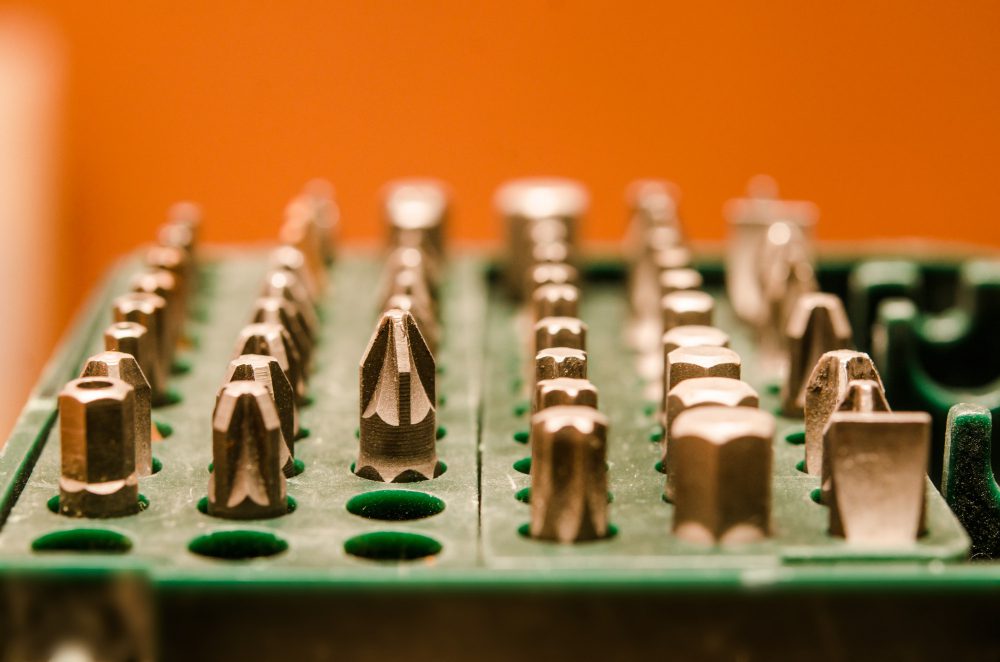How much RAM do I really need?
In today’s technology-driven world, having enough RAM (Random Access Memory) is crucial for optimal performance and multitasking on our devices. Whether you’re using a desktop computer, laptop, or smartphone, the amount of RAM you have can greatly impact your overall experience. But how much RAM do you really need? Let’s dive into this question and explore the factors that determine the ideal amount of RAM for different users.
The role of RAM:
RAM is a type of computer memory that stores data and instructions that are actively used by the CPU (Central Processing Unit). It allows your system to access and manipulate data quickly, providing a temporary workspace for running applications and processes. The more RAM you have, the more information your device can store and access without relying on slower storage options, such as hard drives or solid-state drives.
Determining factors:
Several factors come into play when determining how much RAM you need:
- The type of tasks you perform: Different tasks require varying amounts of RAM. For basic web browsing, word processing, and light multimedia consumption, 4GB to 8GB of RAM will usually suffice. However, if you engage in resource-intensive activities like video editing, gaming, or running virtual machines, you’ll benefit from 16GB or more.
- Your operating system and software requirements: Some operating systems and software applications have minimum RAM requirements. Make sure to check the specifications of the software you use frequently to determine the recommended RAM for optimal performance.
- Future-proofing: If you plan to keep your device for several years, it’s wise to invest in additional RAM to accommodate future software updates and increasing resource demands. This way, you can ensure smooth performance without needing to upgrade again in the near future.
RAM recommendations for different users:
Based on the factors mentioned above, here are some general RAM recommendations for different types of users:
Basic users: If you primarily use your device for web browsing, email, word processing, and light multimedia consumption, 4GB to 8GB of RAM should be sufficient.
Intermediate users: Users who engage in moderate multitasking, photo editing, and light gaming should consider 8GB to 16GB of RAM for smoother performance.
Power users: If you’re a professional video editor, gamer, or run resource-intensive applications, 16GB or more of RAM is recommended to ensure seamless multitasking and optimal performance.
Is 64 GB RAM Overkill?
When it comes to computer specifications, one aspect that often gets debated is the amount of random access memory (RAM) installed. With technology advancing rapidly, it’s important to evaluate if 64 GB RAM is necessary or simply overkill.
The Case for 64 GB RAM
For power users and professionals in fields such as video editing, graphic design, and virtual machine management, having 64 GB RAM can provide a significant boost in performance. These resource-intensive tasks require ample RAM to handle concurrent processes smoothly. With 64 GB RAM, multitasking becomes effortless, reducing load times and enhancing overall productivity.
The Considerations
However, for the average user who engages in everyday tasks like web browsing, word processing, and media consumption, 64 GB RAM might be excessive. Most modern operating systems and applications are designed to perform well with 8-16 GB RAM, making 64 GB a luxury that may not be fully utilized. Investing in other areas, such as a faster processor or solid-state drive, could provide more noticeable improvements for these users.
The Verdict
Ultimately, the decision to opt for 64 GB RAM depends on your specific needs and usage patterns. If you frequently work with resource-intensive applications or engage in heavy multitasking, the extra RAM can be a worthwhile investment. However, for casual users, it may be more prudent to allocate resources differently.
“Remember, RAM is not the only factor determining overall system performance. Consider a balanced approach based on your requirements.”
To help you make an informed decision, here’s a table showcasing the typical RAM requirements for different tasks:
| Task | RAM Requirement |
|---|---|
| Browsing, word processing, multimedia playback | 8-16 GB |
| Photo editing, light video editing, virtual machines | 16-32 GB |
| 3D rendering, heavy video editing, professional applications | 32 GB or more |
In conclusion, while 64 GB RAM can offer significant benefits for certain users, it may be considered overkill for many. Assess your usage requirements and strike a balance between RAM, processor speed, storage, and other factors to optimize your system’s performance and value.
Is 128 GB RAM Overkill?
When it comes to computer hardware, the more RAM you have, the better your performance will be. However, there comes a point where the amount of RAM becomes excessive and unnecessary. One such case is when it comes to 128 GB RAM.
What Is RAM?
RANDOM ACCESS MEMORY (RAM) is a crucial component of any computer system. It is responsible for storing and providing quick access to data that the CPU needs to process. Essentially, it acts as a temporary storage space for running applications and files.
How Much RAM Do You Really Need?
The amount of RAM you need depends on the tasks you perform on your computer. For the average user who uses their computer for browsing, email, and light productivity work, 8 GB to 16 GB of RAM is generally sufficient. Even for most gamers, 16 GB is considered the sweet spot.
However, if you are a professional video editor, graphic designer, or 3D animator, you may benefit from having more RAM. These memory-intensive tasks can take advantage of larger amounts of RAM and help improve workflow and render times.
Is 128 GB RAM Worth It?
For the majority of users, 128 GB of RAM is indeed overkill. It is a massive amount of memory that is not necessary for everyday tasks and even most demanding applications. Investing in such a large amount of RAM would likely be wasteful and result in minimal performance gains.
“Unless you are engaged in specialized professional workloads that demand an enormous amount of RAM, 128 GB is simply not worth the investment.”
In addition to the high cost of purchasing 128 GB RAM, there are other factors to consider. Operating systems and software must also be optimized to effectively utilize such large amounts of memory. Without proper optimization, the performance gains will be minimal.
How Much RAM for Gaming?
Gaming performance heavily relies on several factors, and one critical component that directly impacts gameplay is Random Access Memory (RAM). RAM is responsible for storing essential data that your computer needs to access quickly, and having enough RAM can greatly enhance your gaming experience. So, how much RAM do you need for gaming? Let’s explore.
Why is RAM important for gaming?
RAM plays a vital role in gaming as it affects both the speed and performance of your computer. When you play games, they load various assets such as textures, models, and levels into the RAM for quick access. Having more RAM allows your system to store and access a larger amount of this game data simultaneously, resulting in smoother gameplay, reduced loading times, and improved overall performance.
The amount of RAM you need for gaming depends on several factors:
- The specific requirements of the game you’re playing.
- The resolution and quality settings you play at.
- The number of background processes or applications running alongside the game.
As a general rule of thumb, most modern games recommend a minimum of 8GB of RAM. However, to future-proof your system and ensure optimal performance, it’s advisable to have at least 16GB of RAM.
Benefits of having more RAM for gaming
Having more RAM than the minimum requirements can offer several advantages:
- Improved multitasking: With more RAM, you can seamlessly switch between the game and other applications without experiencing lag or slowdowns.
- Higher frame rates: Additional RAM allows your system to cache more data, resulting in smoother gameplay and potentially higher frame rates.
- Future-proofing: Games are becoming increasingly demanding in terms of system requirements. By having more RAM, you’ll be prepared for future game releases.
In the words of gaming enthusiast John Carmack, “RAM never hurts.”
In addition to the amount of RAM, the RAM speed also plays a role in gaming performance. Faster RAM can deliver data to your CPU more quickly, further enhancing overall system responsiveness. Consider checking your motherboard’s specifications to determine the supported RAM speeds before upgrading.
In conclusion, having sufficient RAM is essential for optimal gaming performance. While 8GB might be enough for most current games, investing in at least 16GB of RAM will ensure a smoother gaming experience and provide room for future advancements in gaming technology.
Is RAM in the motherboard?
Introduction
Random Access Memory, commonly known as RAM, is an integral part of any computer system. It plays a crucial role in determining the performance and speed of a computer. But where exactly is RAM located? Is it within the motherboard itself?
The Function of RAM
Before we delve into the location of RAM, let’s first understand its primary function. RAM is a type of computer memory that stores data that is actively being used by the CPU. It allows for quick and temporary storage of instructions and data, enabling faster access and retrieval times.
RAM and the Motherboard
To answer the question, yes, RAM is indeed connected to the motherboard. However, it is not physically integrated into the motherboard itself like other components such as the CPU or GPU. Instead, RAM modules are separate components that are inserted into slots on the motherboard.
The number and type of RAM slots available on a motherboard can vary. Most modern motherboards have multiple slots, allowing for expansion and flexibility when it comes to RAM upgrades. It is essential to ensure compatibility with the motherboard’s specifications when purchasing new RAM modules.
RAM Slots and Modules
In terms of physical appearance, RAM modules resemble small circuit boards with numerous tiny chips on them. These modules come in various form factors such as DIMM (Dual In-Line Memory Module) or SO-DIMM (Small Outline Dual In-Line Memory Module), depending on the type of computer or laptop.
The RAM slots on the motherboard correspond to the type of RAM module to be used. For example, if the motherboard supports DDR4 RAM, it will have DDR4-compatible slots. The motherboard’s manual or specifications can provide detailed information on which RAM modules are compatible.
Does a Motherboard Contain RAM?
The motherboard is a vital component of any computer system, acting as the main circuit board that connects all other hardware components together. While it plays a critical role in the functioning of a computer, the motherboard itself does not contain RAM (Random Access Memory).
What is RAM?
RAM is a type of computer memory that allows data to be read from and written to by the processor. It provides temporary storage for the operating system, applications, and data being actively used by the computer. When the computer is powered off, the data stored in RAM is lost.
Where is RAM Located?
RAM modules are separate components that are connected to the motherboard. They can typically be found near the CPU socket or in slots specifically designated for RAM. The number of RAM slots available on a motherboard determines the maximum amount of RAM that can be installed.
Why Isn’t RAM Integrated Into the Motherboard?
There are a few reasons why RAM is not integrated into the motherboard:
- Flexibility: By having separate RAM modules, it allows for easier upgrades and replacements. If the RAM were integrated into the motherboard, upgrading or replacing it would require replacing the entire motherboard.
- Cost-effectiveness: RAM modules come in various capacities and speeds. By allowing users to choose and install their preferred RAM modules, it reduces the cost of manufacturing motherboards with different RAM configurations.
“The separate nature of RAM modules also allows for more flexibility in terms of design and customization for different computer systems.”
It’s worth noting that some smaller computing devices, such as smartphones and tablets, do have RAM integrated into their mainboards due to space limitations and the desire for compact designs. However, in traditional desktop and laptop computers, RAM remains a separate component.
In summary, while the motherboard is responsible for connecting various hardware components, it does not house the RAM itself. The RAM modules are separate components that are connected to the motherboard, providing temporary storage for data actively used by the computer.
Conclusion
In conclusion, for the average user, 128 GB RAM is overkill and unnecessary. Investing in more RAM than you actually need will not significantly improve your computer’s performance. It is important to evaluate your computing needs and choose the appropriate amount of RAM that aligns with your workload.
In conclusion, while RAM itself is not physically located within the motherboard, it is an essential component that connects to the motherboard via specific slots. Understanding the compatibility between RAM modules and motherboard is crucial for optimal performance and system stability. So, if you ever need to upgrade your computer’s RAM, remember to check the motherboard’s specifications to ensure a proper fit.



